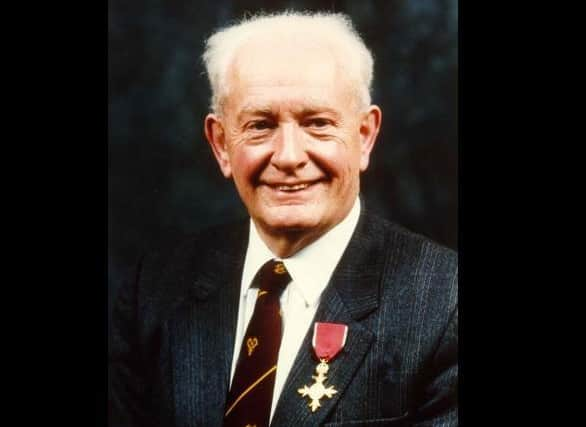Tributes paid to 'pioneering' Northampton-born physicist responsible for breakthroughs in medical imaging
and live on Freeview channel 276
Tributes have been paid to a Northampton-born physicist whose team led the world with their breakthroughs in medical imaging after his death at the age of 94.
Professor John Mallard played a crucial role in the development of magnetic resonance imaging (MRI) and positron emission tomography (PET) while working at the University of Aberdeen.
Advertisement
Hide AdAdvertisement
Hide AdProfessor Siladitya Bhattacharya, head of the university's School of Medicine, Medical Sciences and Nutrition, said they were deeply saddened by his death.


“His legacy lives on through the technology that saves lives on a daily basis and we are proud that he carried out such ground-breaking work at the University of Aberdeen," he said.
“Our thoughts are with his family at this time.”
Professor Mallard was born in Kingsthorpe in 1927, to a grocer - he attended Kingsthorpe Grove Infants and Junior School from 1932 to 1938 and won a scholarship to the Northampton Town and Country School in 1938.
John went on to study physics at the University College Nottingham, completing his PhD on the magnetic properties of uranium in 1951.
Advertisement
Hide AdAdvertisement
Hide AdAfter a spell at the Liverpool Radium Institute, he moved to Hammersmith Hospital in 1953, to take up the post of senior physicist in the Royal Postgraduate Medical School of the University of London.
He became head of department in 1957 and reader in 1963, before moving to St Thomas’ Medical School as reader in 1964.
Professor Mallard built the first whole-body radio-isotope scanner in 1957, now on display at the London Science Museum, and also developed the first gamma camera.
Professor David Lurie, who worked under Professor Mallard, said his research which indicated that MRI might be able to diagnose cancer went largely unnoticed after being published in the scientific journal, Nature, in 1964.
Advertisement
Hide AdAdvertisement
Hide AdOn moving to the University of Aberdeen in 1965, he gained Medical Research Council funding to begin its first scanning service of the thyroid, liver and brain.
At the same time, his team was developing MRI technology, culminating in the first whole-body scanner, which entered service in 1980.
The technology is now used all over the world in the diagnosis and treatment of cancer, dementia and a wide range of other conditions and injuries.
Professor Mallard was also a champion of PET imaging even though the technology was still very much in its infancy at the time.
Advertisement
Hide AdAdvertisement
Hide AdIn his inaugural lecture shortly after joining the University as its first professor of medical physics in 1965, he predicted PET would become one of the most powerful tools for studying human diseases, which would prove correct.
Professor Mallard retired in 1992, taking up the position of professor emeritus of medical physics at the university and being awarded an OBE in the same year.
He was made an honorary freeman of the city of Aberdeen in 2004 and a hereditary freeman of the borough of Northampton in October 2018.
Emeritus Professor Peter Sharp, who worked for Professor Mallard before becoming his successor, said he played a major role in the development of medical physics both in the UK and abroad.
Advertisement
Hide AdAdvertisement
Hide Ad“It is no understatement to say that hundreds of thousands of patients worldwide have benefited from his vision for medical imaging," he added.
Professor Lurie described Professor Mallard as a 'pioneer, leading light and world-recognised authority in medical physics' whose work is still benefitting doctors and patients today.
"There is no doubt that I owe my career to John Mallard, and I am extremely grateful to him for that," he said.
"During the years that I worked for him, I found John Mallard to be a strict, very fair manager.
Advertisement
Hide AdAdvertisement
Hide Ad"When a memo from him appeared - this was long before email - I knew that there would be no question of an extension of any deadline, but equally his suggestions, or 'commands', were always pertinent and frequently paid scientific dividends.”